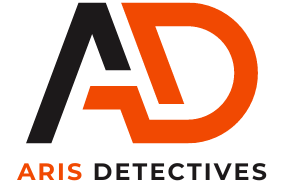Introduction
Welcome to our guide to unlocking the secrets to solving mysteries like a pro detective agency india. Whether you are a fiction writer, a board game enthusiast, or simply curious about how detectives crack cases, this guide will provide you with valuable insights into the world of investigation. From gathering evidence to analyzing clues, we will explore the strategies and techniques employed by top detective agencies. So, put on your thinking cap, and get ready to embark on a thrilling journey into the world of mystery solving!
Step 1: Gather Evidence
Evidence is the cornerstone of any successful investigation. In order to crack a case, it is crucial to gather as much information as possible. Here are some key methods to gather evidence:
1. Interviews: Conduct interviews with witnesses, suspects, and any other individuals who might have relevant information.
2. Search Warrants: If necessary, apply for search warrants to gain legal access to private properties or documents.
3. Surveillance: Utilize surveillance techniques such as hidden cameras, GPS tracking devices, or undercover operations to gather additional evidence.
4. Scientific Analysis: Utilize forensic experts to analyze physical evidence, such as fingerprints, DNA, or ballistics.
5. Database Research: Explore publicly available databases, such as criminal records, social media profiles, or financial records, to gain additional insights.
Step 2: Analyze Clues
Once you have gathered evidence, it’s time to analyze and piece together the puzzle. Here are some techniques to help you analyze clues:
1. Fact-Checking: Double-check all information to ensure its accuracy and relevance.
2. Analyze Patterns: Look for patterns or connections within the evidence, such as recurring elements, timelines, or relationships.
3. Mental Mapping: Create a mental map or diagram to visualize the relationships between different pieces of evidence.
4. Reverse Engineering: Analyze the crime scene in reverse, starting from the victim and working your way back to the perpetrator.
5. Cross-Examination: Question witnesses, suspects, and yourself to identify any inconsistencies or contradictions in the evidence.
Step 3: Develop Theories
As you analyze clues, it’s natural to develop theories or hypotheses about the case. Here are some factors to consider when developing theories:
1. Prior Knowledge: Consider your own experiences and insights, as well as any prior knowledge you may have about the case.
2. Theories of Crime: Consider the various theories of crime, such as motive, opportunity, or absence of evidence.
3. Analytical Thinking: Apply critical thinking and logical reasoning to evaluate the strengths and weaknesses of different theories.
4. Emotional Detachment: Avoid forming biases or preconceived notions, as objectivity is crucial for solving mysteries.
5. Open-Mindedness: Be open to alternative possibilities and consider all possibilities, even if they seem far-fetched.
Step 4: Test Your Theories
Once you have developed theories, it’s time to test them. Here are some methods to test your theories:
1. Investigative Actions: Take investigative actions based on your theories, such as conducting additional interviews, reviewing records, or retracing steps.
2. Physical Evidence: Analyze new evidence that may support or contradict your theories.
3. Verification: Verify your theories by comparing them to established facts, seeking expert opinions, or conducting additional research.
4. Leverage: Utilize any connections, resources, or partnerships you may have to gain insights or test your theories.
5. Timeline Analysis: Analyze the timeline of the crime, looking for any gaps or inconsistencies that may indicate your theory is incorrect.
Step 5: Evaluate and Revise
As you continue to investigate, it’s essential to evaluate and revise your theories as needed. Here are some factors to consider when evaluating and revising your theories:
1. New Information: Keep an open mind and adapt to new information as it becomes available.
2. Continuing Investigation: Continue to gather new evidence and analyze clues to refine and improve your theories.
3. Confidence: Assess the level of confidence you have in your theories and adjust accordingly.
4. Collaboration: Collaborate with other detectives or experts to gain different perspectives and get more insights.
5. Case Closure: When sufficient evidence has been gathered and your theories are proven, declare the case closed.
Conclusion
Solving mysteries like a pro detective agency Delhi takes a combination of skill, dedication, and determination. By following these key steps and leveraging the strategies and techniques outlined here, you can unlock the secrets to becoming a skilled detective. So, grab your magnifying glass, put on your trench coat, and get ready to embark on a thrilling mystery-solving adventure!

